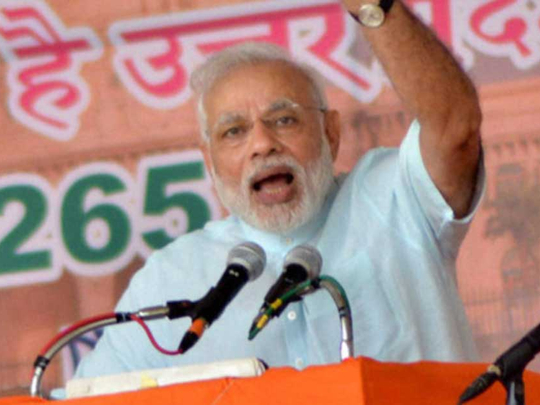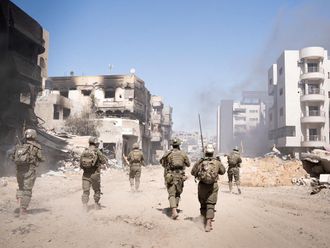
Attractive slogans coined by the Indian government’s PR people include ‘Skill in India’ and ‘Make in India’. But these are mere slogans boasting of the demographic dividend that India proudly professes to possess, but the fact is that this dividend is so poor in essential skills that many of our youths are practically unemployable.
We are not talking about the elite and upper-middle class with access to premium education, but to the majority who belong to the middle, lower middle and poorer classes. Experts assert that the Indian school education is in deep crisis and urgent focus is needed for learning the basics.
Recently, a national daily newspaper in India published a grim report that most Indian labourers lack vocational know-how. Ask the electrician who checks out your regulator or the plumber who re-lays your pipeline; most of them will admit they do not have a qualification certificate and have picked up the skills of their trade while on the job. These admissions bring to mind my own experiences while interviewing candidates for the position of officer in the country’s largest public-sector bank. Many just hemmed and hawed over simple questions related to their own field of study that they had cleared only a year or two earlier. What did they learn? How able were the tutors? How well was the syllabus aligned to the practicalities of the particular profession? Their dismal performance puts a big question mark on the state and quality of India’s education system.
What is the reason for the findings that show that Indian engineering students are largely unemployable? Why is it that Indian graduates and post-graduates are unable to participate competitively for good jobs? Why do many fear that instead of a potent, talented and skilled population, India may end up with a huge number of the most unemployable young people in the world, with the good ones all having left in disappointment for greener pastures?
The Indian media is full of advertisements about speciality colleges. Every month, new colleges are being opened across India, mostly money-spinners for the politically-backed founders. The fault lies in the failure to realise that it is vital to learn the basics before moving on to the complexities of higher education and specialisation. Primary education in India remains in a shambles. There is not enough debate over the desperate need to set up good basic education institutions for the poor and the lower-middle classes, about the kind of pre-school and kindergarten schools that have mushroomed everywhere, but which only the well-to-do can afford. Even where schools do exist, there are few facilities and worse, no teachers, or teachers who turn up to teach at their whim.
My maid’s daughter aspires to learn and speak good English as a passport to a good career in medicine, but she often cannot understand what her teacher says. No one in her house speaks the language and very few do in the neighbourhood where she lives. If she asks the teacher to explain, she is rebuffed with a crushing retort and the child is too embarrassed to press further.
Appalling and embarrassing
A sample survey of some 20,000 children in government schools was conducted in the state of Gujarat by Pratham, a reputed organisation for annual surveys of education in India. The results are instructive, appalling and embarrassing, while the picture from private schools is almost as grim. Ninety-four per cent of students in rural Gujarat aged 10 (Grade 5) could not read a single sentence in English and among Grade 7 students, the percentage was a dismal 78 per cent. Worse still, only 44 per cent of Grade 5 students had Grade 3 level reading ability in their own language — Gujarati.
The findings are equally dismal in the field of Mathematics. Only 13 per cent of Grade 5 students could do division, a fact that portends a grim future for a community that is known for its business acumen and yet does not have the ability to do basic arithmetic.
The pan-India picture is similarly discouraging. The Annual Status of Education Report (ASER) 2015, which conducted a survey of 577 rural districts across India, shows little to cheer about the quality of learning in schools. Grade 5 students who can read a Grade 2 text is 48 per cent i.e. every second rural child cannot read texts of a child three grades below. Arithmetic is still a challenge with only 46 per cent of Grade 8 students able to do division. The situation is similar for English where the percentage has in fact deteriorated to 46.8 per cent from 60.2 per cent in 2009.
Things have not changed much despite levying education tax (to fund education) and the Right to Education Act (to ensure access to education for all children), reforms that may have somewhat improved infrastructure in the school education system but not the learning outcome. State governments, not the Centre alone, have a major role in ensuring better education, for without focus on basics, excellence in higher institutions will remain a pipe dream for most.
In conclusion, the only road to skill development among the young and subsequent gainful employment, is through the education route. The government would be best advised to do a rethink about the ground realities regarding its achievements. It must concentrate on thoroughly revamping India’s primary education system that will benefit the bulk of the populace who belong to the lower and lower-middle classes of Indian society.
The United Nations, in doing away with the term ‘developing’ nations and referring to them henceforth as ‘lower income’, ‘lower-middle income’ or ‘middle income’ nations, based on individual earning capacity, is forcing governments to do a reality check. In India’s case, the classification is that of a lower-income country, while China is rated as a middle-income nation.
It is high time India changes this perception, which is so much in contradiction of the image that India wishes to project. It is possible if the intent is genuine.
Vimala Madon is a freelance journalist based in Secunderabad, India.








